This is my third post continuing with the theme of finding inspiration to boost our own creativity. Please think about how these photos impact your head, heart and gut intelligence centers. How does each voice speak to you when you consider them?
When I need inspiration to kick-start creativity it helps me to look up… I am mesmerized when I think about riding in our Milky Way galaxy— home to 400 billion stars and our own moon, sun and solar system. Our spiral galaxy is nearly 120,000 light-years across and is a fairly typical barred spiral–with four major arms in its disk, at least one spur, and a newly discovered outer arm. The galactic centre, which is located about 26,000 light-years from Earth, contains at least one supermassive black hole (called Sagittarius A*).
The Milky Way began forming around 12 billion years ago and is part of a group of about 50 galaxies called the Local Group. The Andromeda Galaxy is part of this group as are numerous smaller galaxies, including the Magellanic Clouds. The Local Group itself is part of a larger gathering of galaxies called the Virgo Supercluster of galaxies. Is your head spinning yet? We belong to a ginormous neighborhood of galaxies.
Lets delight in some of the most amazing views of our Milky Way galaxy ever captured by amateur and professional astronomers… or “MW” as I affectionately say.
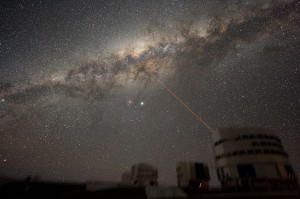
Image of the night sky above Paranal, Chile on 21 July 2007, taken by ESO astronomer Yuri Beletsky. A wide band of stars and dust clouds, spanning more than 100 degrees, is seen. At the centre of the image, two bright objects are visible– the planet Jupiter and the star Antares.
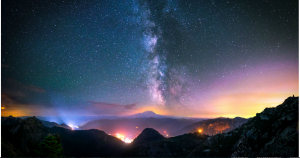
During a road trip in 2015 to a wedding Mark Lehrbass spent the night out of Snoqualmie Pass, WA. “Epic light pollution from Seattle’s suburbs, multiple wild fires, and the 90 interstate winding through the mountains made for some incredible lighting to frame Mt. Ranier and the Milky Way rising above it,” he said. All I can say is WOW…
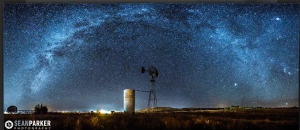
Here MW glows over an old windmill in this stunning image shot by an amateur astronomer and astrophotographer Sean Parker. This (14-shot panoramic view) is over Paulden, Ariz. The planet Jupiter, bright star Sirius, constellation Orion and open star cluster–the Pleaides–can also be seen toward the right in the photo.
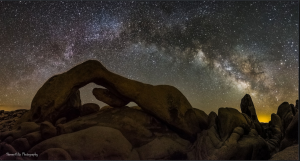
In 2014, astrophotographer Shreenivasan Manievannan photographed MW arching over a rock arch in Joshua Tree National Park, California.
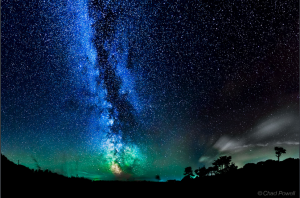
The Milky Way and green airglow are captured over the Isle of Wight in this image taken by Chad Powell on Oct. 4, 2013.
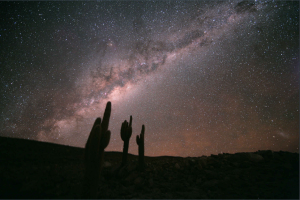
MW is seen in all its glory, as well as, in the lower right, the Large Magellanic Cloud. Credit: ESO/S. Guisard
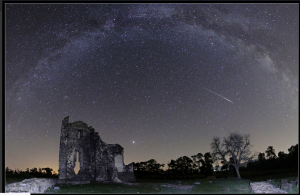
The bright Perseid meteor streaked through skies in Hungary on August 8, 2010. In the foreground is the Church of St. Andrew ruin, with bright Jupiter dominating the sky to its right. Two galaxies lie in the background: our own MW, and the faint smudge of the more distant Andromeda Galaxy just above the ruin’s leftmost wall.
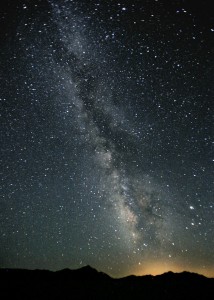
A view of MW toward the constellation Sagittarius (including the Galactic Center) as seen from the Black Rock Desert, Nevada). The bright object on the right is Jupiter, just above Antares. Photo by Steve Jurvetson.
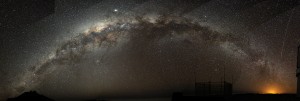
MW arching from the Cerro Paranal, Chile, on the left, and sinking into the Antofagasta’s night lights. The bright object in the center, above the Milky Way is Jupiter. The Magellanic Clouds are visible on the left side, and a plane has left a visible trace on the right, along the Vista enclosure. Photo by Bruno Gilli/ESO.
This detailed artist’s impression shows the structure of MW below, including the location of the spiral arms and other components such as the bulge. This image includes the most recent mapping of the shape of the central bulge from survey data from ESO’s VISTA telescope at the Paranal Observatory, credit NASA/JPL-Caltech/ESO/R. Hurt.
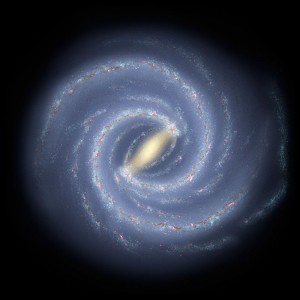
Where is our sun relative to our gigantic MW neithborhood?
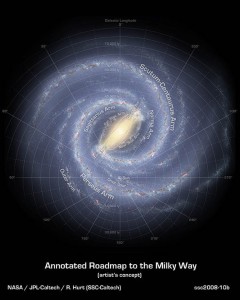
Yes our sun is located close to the “Orion Spur.” In my own sky above Santa Fe, New Mexico–I can always depend on finding Orion! The constellation is located on the celestial equator and visible throughout the world, named after a Greek hunter in mythology.
Lastly photographer Antoni Cladera shows why “shooting the Milky Way is contagious” with photo below.
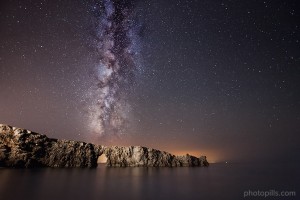
Our Milky Way is just one of countless galaxies in the universe. Our view of the universe is expanding. Less than a century ago, astronomers thought that our Milky Way galaxy of stars might be the whole universe. Today, we can observe the splendor of galaxies far beyond our own. We can see the estimated 100 billion galaxies that make up our “observable universe.”
We are all creative creatures living in a God ordained, ever-creative, and expanding universe. How is your head, heart and gut inspired by these photos in distinctive ways? Which is your favorite and why?
Thanks for reading my post. I am an organizational and business consultant living in the mountains of Santa Fe, New Mexico with my husband and dogs. My core message of everyone is creative resonates with people of all ages and walks of life. I invite all to become the best version of themselves in my book and find true meaning by pursing long term creative quests.
